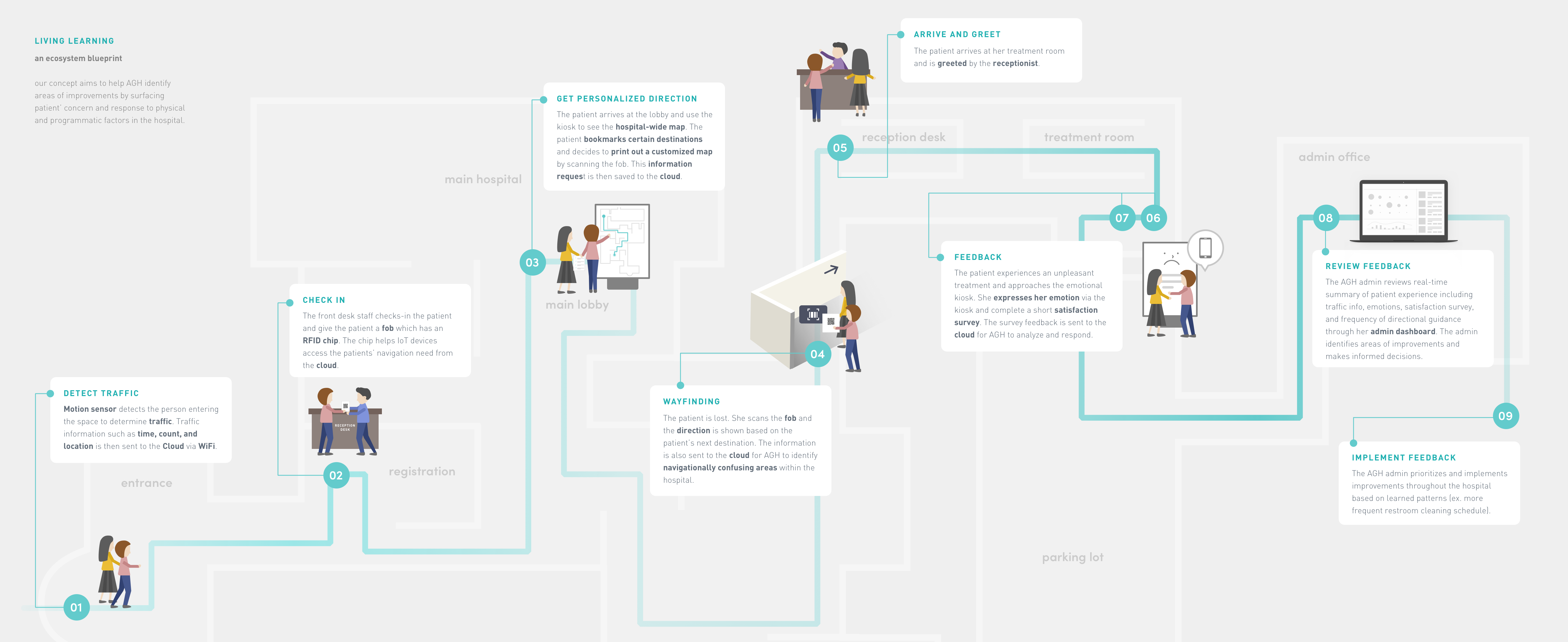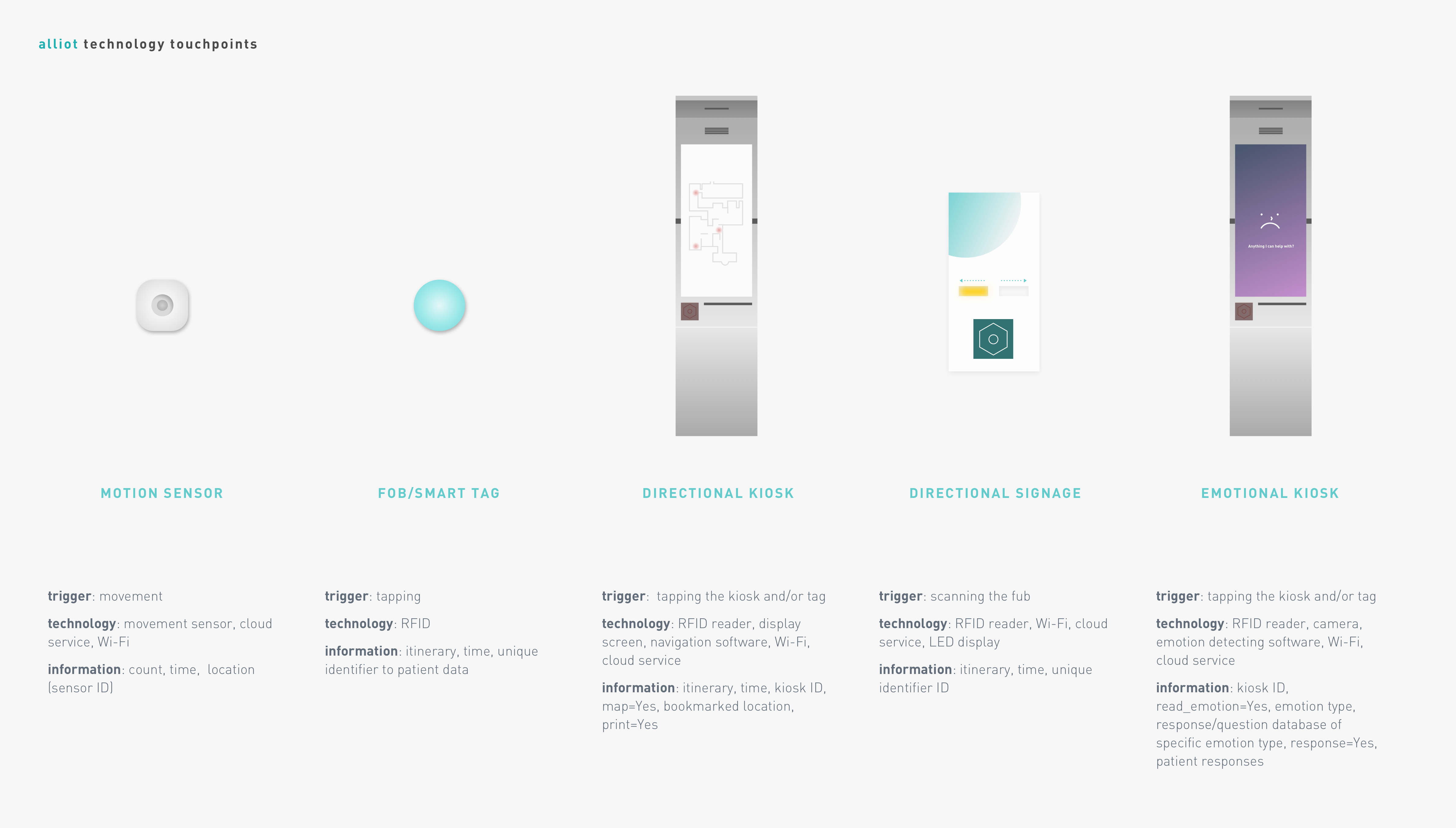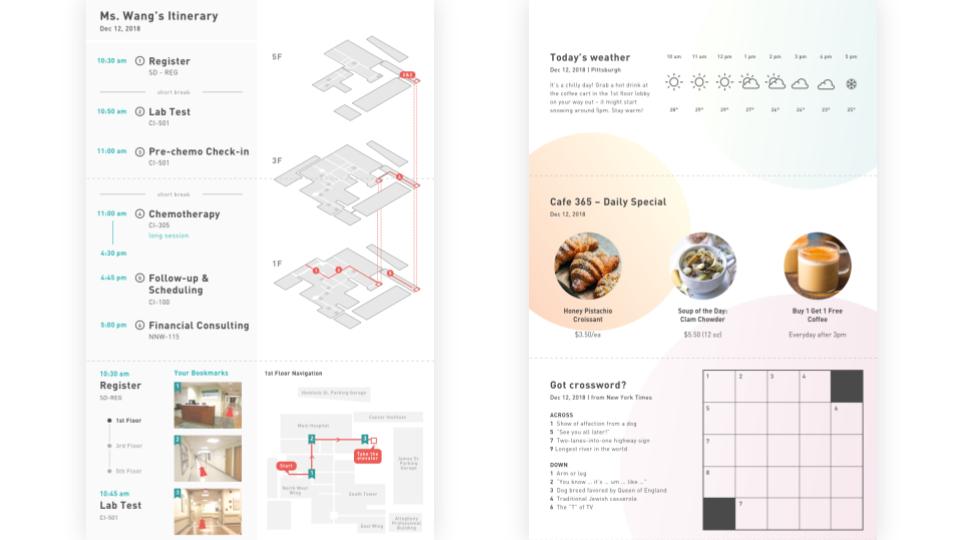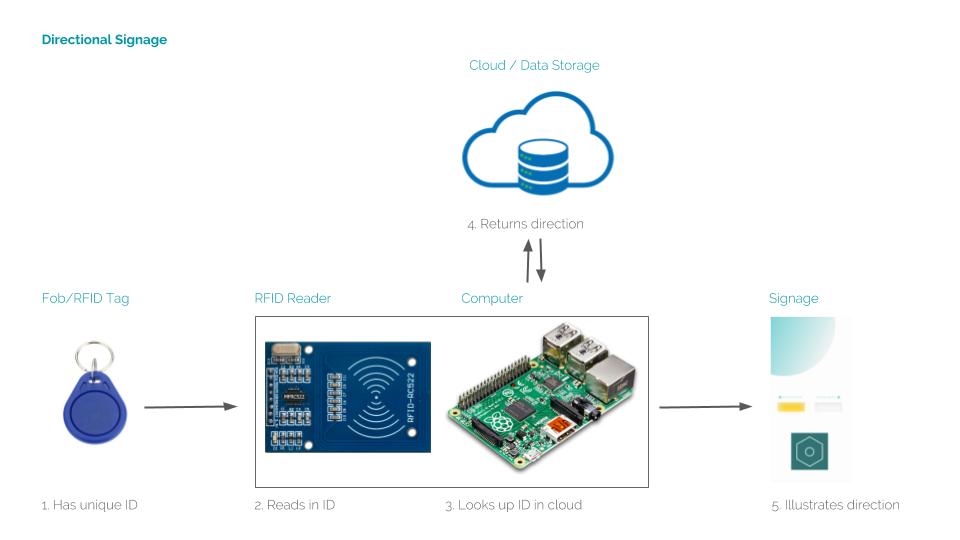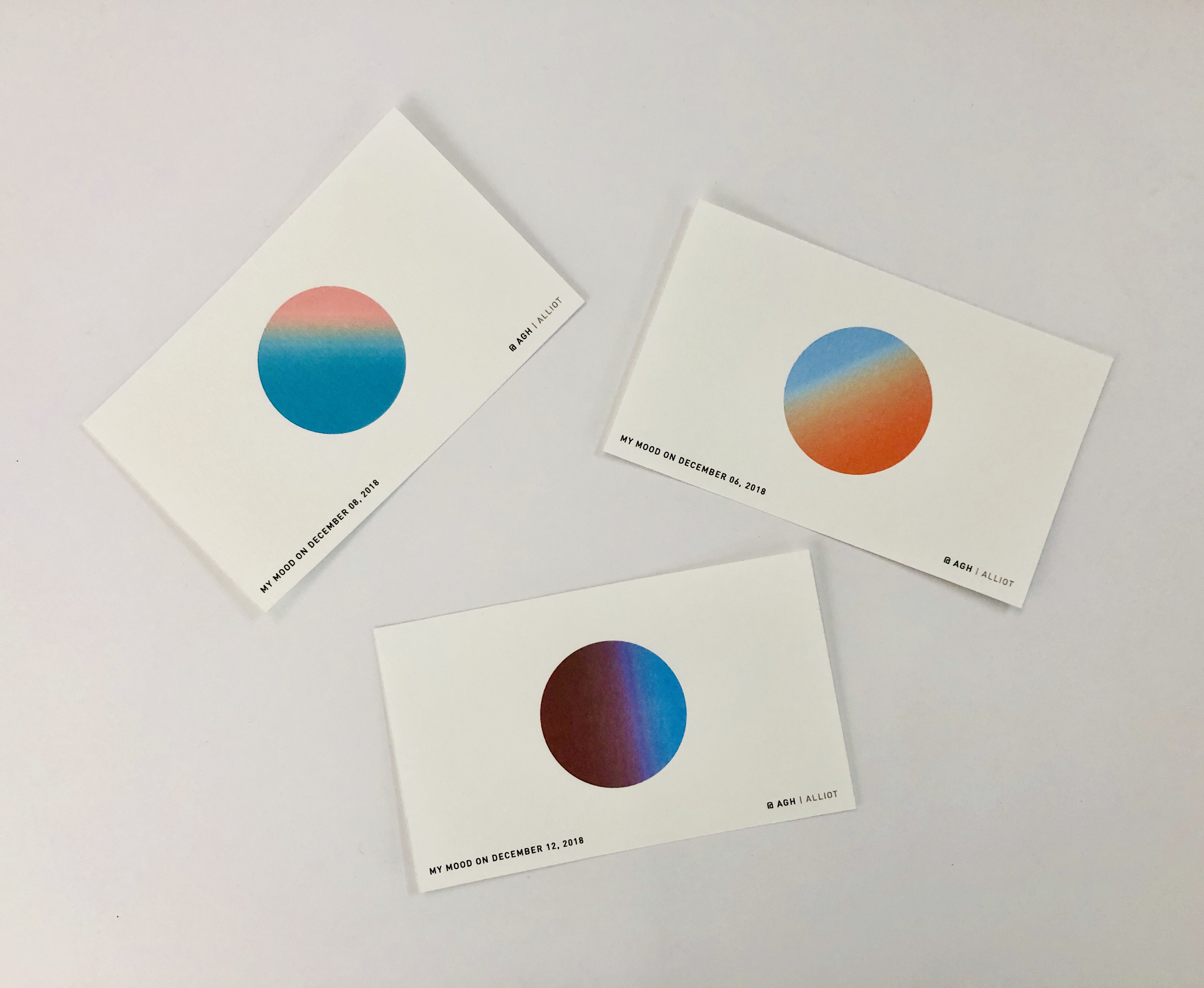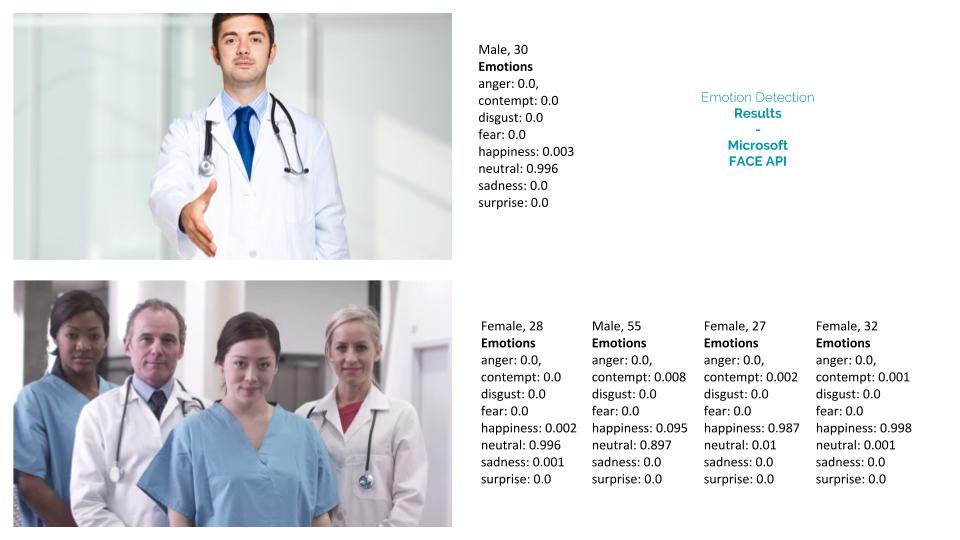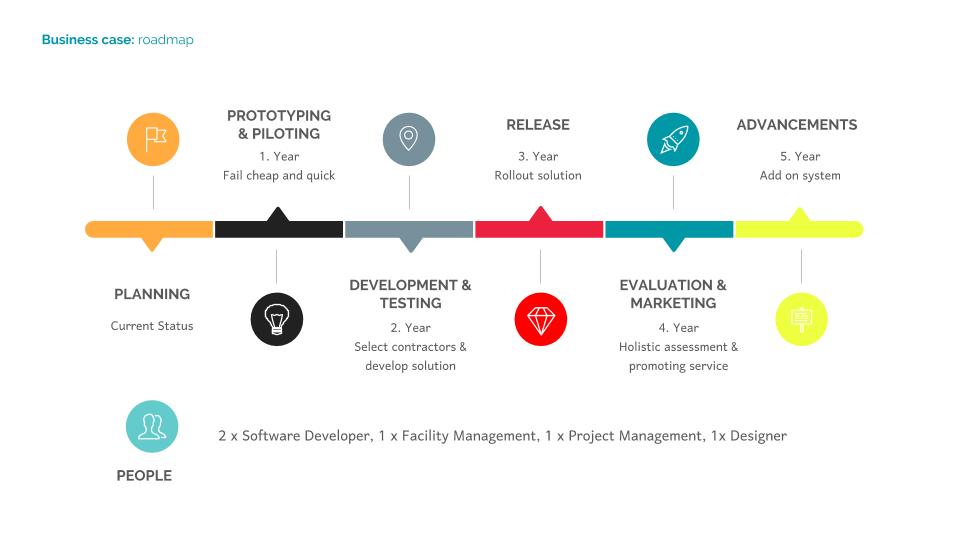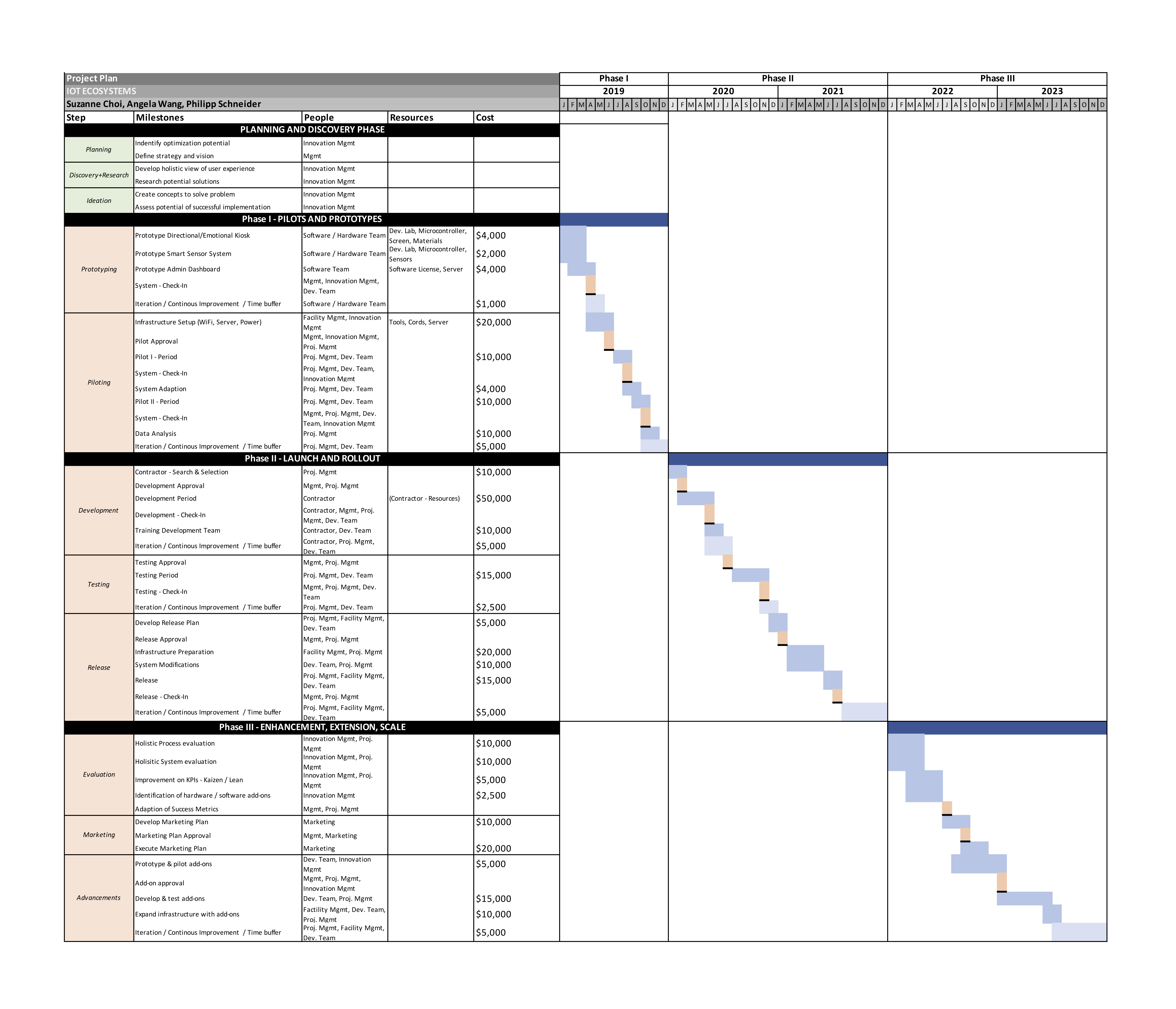Overview
The Allegheny General Hospital is challenged with various physical and operational constraints within the hospital – from navigation to the treatment experience – all stand as barriers to provide more humanized experiences for patients and their companions who suffer from cancer or other diseases. For the hospital staff, the lack of organized information makes it hard for them to identify and prioritize areas of improvement. AGH will need to seek innovative ways to quickly identify, predict, and respond to patients’ need during their visit.
Problem Statement
How might we leverage IoT technologies to enable AGH to make strategic decisions on hospital improvements using new and real-time information?
Our resulting IoT system, Alliot, addresses the three following question in particular:
- How might an IoT system provide personalized navigation assistance to patients while identifying wayfinding pain points
- How might an IoT system encourage patients to express their emotional responses to hospital visits and pinpoint the service and infrastructure shortcomings?
- How might data gathered from an IoT system can provide insights to help AGH admins identify areas of improvement?
